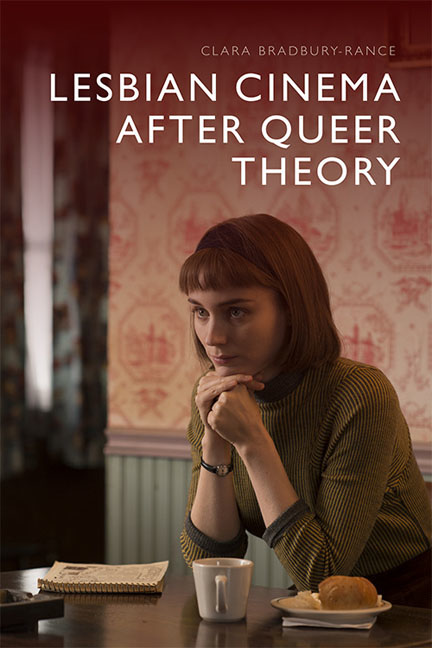Book contents
- Frontmatter
- Contents
- List of Figures
- Acknowledgements
- Preface
- Introduction: Looking after Lesbian Cinema
- 1 The Woman (Doubled): Mulholland Drive and the Figure of the Lesbian
- 2 Merely Queer: Translating Desire in Nathalie … and Chloe
- 3 Anywhere in the World: Circumstance, Space and the Desire for Outness
- 4 In-between Touch: Queer Potential in Water Lilies and She Monkeys
- 5 The Politics of the Image: Sex as Sexuality in Blue Is the Warmest Colour
- 6 Looking at Carol: The Drift of New Queer Pleasures
- Conclusion: The Queerness of Lesbian Cinema
- Notes
- Filmography
- Bibliography
- Index
2 - Merely Queer: Translating Desire in Nathalie … and Chloe
Published online by Cambridge University Press: 14 December 2019
- Frontmatter
- Contents
- List of Figures
- Acknowledgements
- Preface
- Introduction: Looking after Lesbian Cinema
- 1 The Woman (Doubled): Mulholland Drive and the Figure of the Lesbian
- 2 Merely Queer: Translating Desire in Nathalie … and Chloe
- 3 Anywhere in the World: Circumstance, Space and the Desire for Outness
- 4 In-between Touch: Queer Potential in Water Lilies and She Monkeys
- 5 The Politics of the Image: Sex as Sexuality in Blue Is the Warmest Colour
- 6 Looking at Carol: The Drift of New Queer Pleasures
- Conclusion: The Queerness of Lesbian Cinema
- Notes
- Filmography
- Bibliography
- Index
Summary
Troubling the requisites of both mainstream publicity and lesbian subcultural recognition, Anne Fontaine's Nathalie … (2003) is part of an oeuvre in which heterosexual activity is counterbalanced by looks between women. Fontaine's Dry Cleaning (1997) uses the motif of the love triangle to exhibit how a ‘guilty, middle-class couple “clean up” the evidence of their transgressive, sexual desires’ (Tarr and Rollet, 2001: 218). The Innocents (2016) takes place in a female homosocial setting interrupted by men – a Polish convent in the after-math of the Second World War. In Adore (2013), the parallel desires of two female best friends for each other's sons creates a complicated triangulation, or rather multiplication, in which homoeroticism is created by each woman's desire for the other's resemblance. This preoccupation with the intra-feminine gaze resonates with a wider corpus: in François Ozon's Swimming Pool (2003), a charge of eroticism is exhibited in tandem with jealousy and competition. Sofia Coppola's The Beguiled (2017) rarely strays from conversa-tions about the (beguiling) man who provides its central motif, yet the film's aesthetic is driven by the looks among the group of women who plot against him, akin to those shared by many of Coppola's other female protagonists (see Handyside, 2017); the desire he introduces into their homosocial haven produces an erotic complicity. Even if these films fail – and indeed challenge the terms of – the renowned ‘Bechdel test’ of gender equality, which meas-ures a film's merits based on its inclusion of ‘at least two women’ who ‘talk to each other’ about ‘something besides a man’ (Bechdel, 1986: 22), their struc-tures of homoerotic looking complicate their ostensible foci on heterosexual desire in action or in conversation.
The eponymous protagonist of Nathalie … is introduced to us in a point-of-view shot that roves around the bar in which she works, panning across the faces of other women before pausing and zooming in on Nathalie (Emmanuelle Béart) in isolation. As the shot becomes a close-up, Nathalie turns towards the camera (see Figure 2.1). The gaze she returns is that of Catherine (Fanny Ardant), a middle-class, middle-aged woman whose incon-gruous presence in the bar is matched by her unusual motivation. Discovering early in the film that her husband Bernard (Gérard Depardieu) has been cheating on her, she decides to hire a sex worker who will seduce Bernard and recount tales of their affair.
- Type
- Chapter
- Information
- Lesbian Cinema after Queer Theory , pp. 37 - 56Publisher: Edinburgh University PressPrint publication year: 2019



